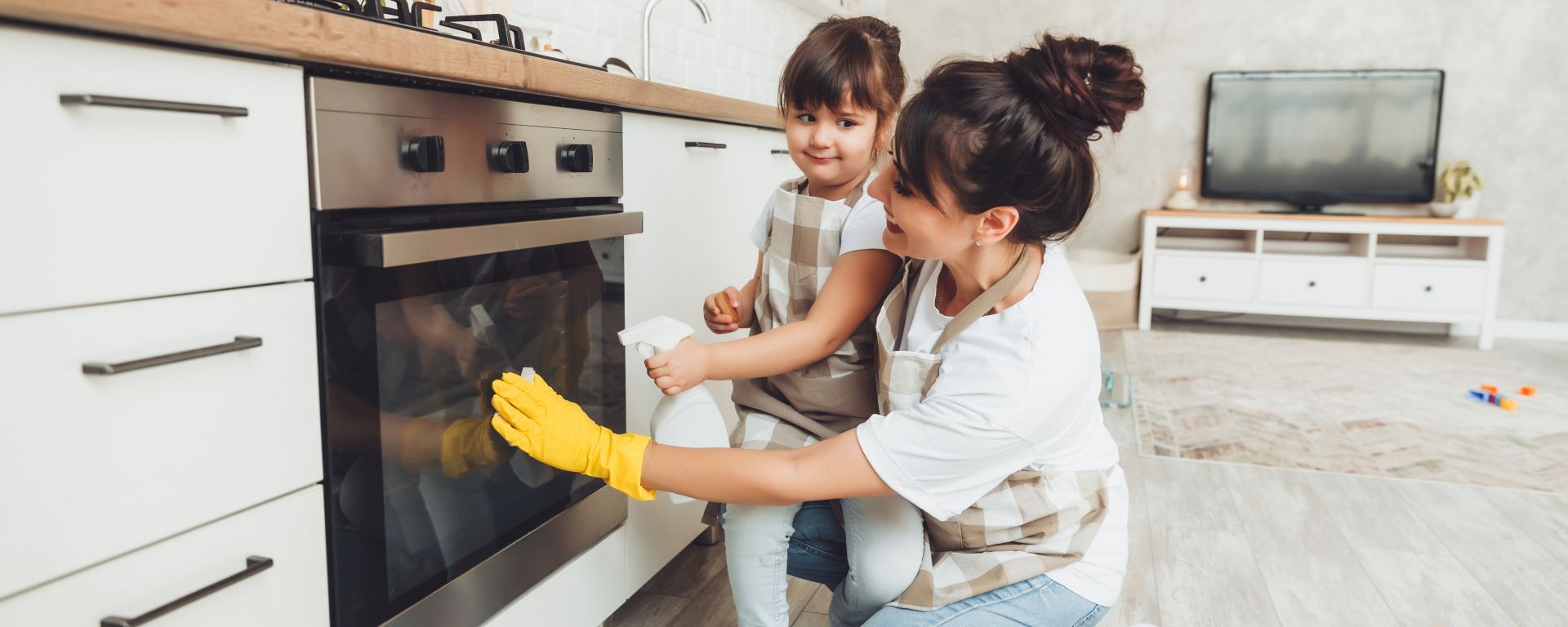Kitchen appliances are the best thing since sliced bread…and as you know, you can use one of them talked about in this article to make sliced bread. They make everything easier, simpler, and more delicious. But because they are used so often, they require regular cleaning, especially if you want to prolong their lifespan and save yourself money from having to replace them in the future.
Regular cleaning is not only important for maintaining their performance, but also for ensuring a healthy and hygienic cooking environment. In this ultimate guide, we will provide you with valuable cleaning tips and techniques for cleaning various kitchen appliances. Enjoy the feeling and results of being a MasterChef while using spotless appliances.
General Cleaning Tips
Before we look at the specific cleaning techniques needed for different appliances, here are a couple of general cleaning tips to always keep in mind for all of them:
- Read the manufacturer’s instructions to ensure you clean your appliances effectively and safely. Different appliances may require different cleaning products or techniques.
- Unplug and disconnect any kitchen appliance before cleaning it to ensure your safety remains a top priority.
Cleaning Specific Appliances
Let’s look at the specific cleaning requirements needed for your fridge, oven and stove, dishwasher, and microwave.
1. Fridge
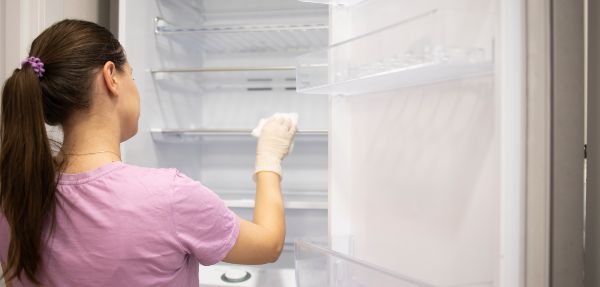
Exterior Cleaning:
Start by wiping down the exterior surfaces of your fridge with a damp cloth and mild detergent. Pay attention to the handles and control panel, as they can accumulate fingerprints and grime. Don’t forget to clean the top of the fridge, as this collects dust easily.
Interior Cleaning:
Empty the contents of your fridge and discard any expired or spoiled food items. Remove the shelves, drawers, and door gaskets and wash them with a solution of mild detergent and water. Wipe down the interior surfaces with the same solution, paying special attention to spills or stains.
Condenser Coil Cleaning:
Locate the condenser coil, which is usually located at the back or beneath the fridge. Using a brush or a vacuum cleaner attachment, remove dust and debris from the coil. This is needed to improve the fridge’s efficiency and prevent potential breakdowns.
2. Oven and Stove
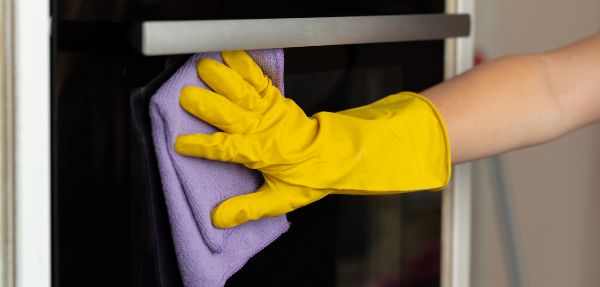
Oven Cleaning:
If you have a self-cleaning oven, follow the manufacturer’s guidelines for activating the self-cleaning cycle. To clean a greasy oven manually, remove the oven racks and soak them in warm, soapy water. Wipe down the oven interior using a suitable cleaner or a paste made from baking soda and water. Don’t forget to wipe down the oven door and control panel as well.
Stovetop Cleaning:
Start by removing the burners, grates, and other removable parts. Soak them in warm, soapy water or a suitable cleaning solution. While those items are soaking, wipe down the surface with a suitable cleaner, ensuring to focus on any spills or grease. Finish off by cleaning the knobs and control panel.
3. Dishwasher
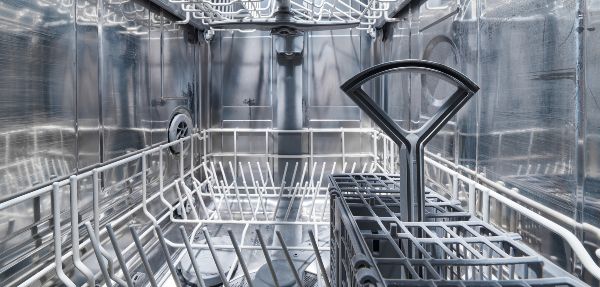
Cleaning the Interior:
Get rid of any food debris or particles from the bottom and sides of the dishwasher. Use a dishwasher cleaner or a DIY natural cleaning solution of vinegar and baking soda to clean the interior. Follow the manufacturer’s instructions for the appropriate amount and application method. Don’t forget to clean the filter and spray arms, as these parts also accumulate residue.
Cleaning the Exterior:
Wipe down the exterior of the dishwasher using a damp cloth and a mild detergent. Don’t forget any parts, including the control panel, handle, and edges, as they will have collected grime and fingerprints.
4. Microwave
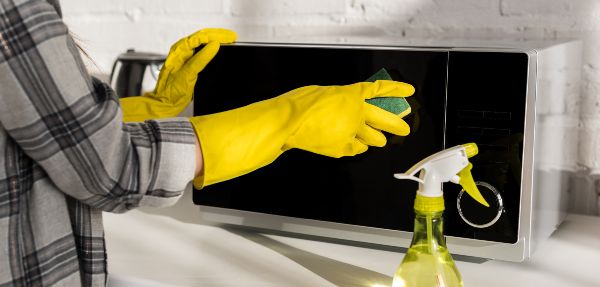
Interior Cleaning:
To clean the microwave interior, place water and lemon slices, or vinegar inside a microwave-safe bowl, and put it in the centre of the microwave. Heat the mixture for a few minutes until steam is produced. Carefully remove the bowl and wipe down the interior surfaces with a cloth or sponge. Clean the turntable and any removable parts separately.
Exterior Cleaning:
Wipe down the exterior surfaces of the microwave with a damp cloth and mild detergent. Pay attention to the control panel and handle, as they will have accumulated fingerprints and stains.
Maintenance and Tips
Once your kitchen appliances are clean, don’t forget that there are maintenance guidelines to follow to prolong their lifespan. Use the two tips below to keep your appliances as good as new for as long as possible.
1. Regular Maintenance
In addition to regular cleaning, schedule routine maintenance tasks for your kitchen appliances. This may include changing filters, inspecting seals, or lubricating moving parts. Refer to the appliance’s manual or contact the manufacturer for specific maintenance recommendations.
2. Tips for Preventing Buildup
To prevent the buildup of grease or residue, wipe down your appliances after each use. This simple habit can save you time and effort in the long run. Consider using liners or covers for appliances like stovetops or toaster ovens to catch spills and prevent them from sticking to the surface.
Conclusion
Regularly cleaning your kitchen appliances is vital for maintaining their performance and cleanliness. By following the manufacturer’s instructions and the specific cleaning tips given above, you can ensure your kitchen is a place where only the best and healthiest food is made and kept.
If you don’t have the time to do a thorough job when cleaning your kitchen appliances, there’s an easy and convenient solution – SweepSouth cleaning services. Professional and experienced SweepStars are ready to accommodate you whenever your schedule allows for it. You won’t recognise your home once they’ve finished a job with lots of care and the greatest attention to detail.

